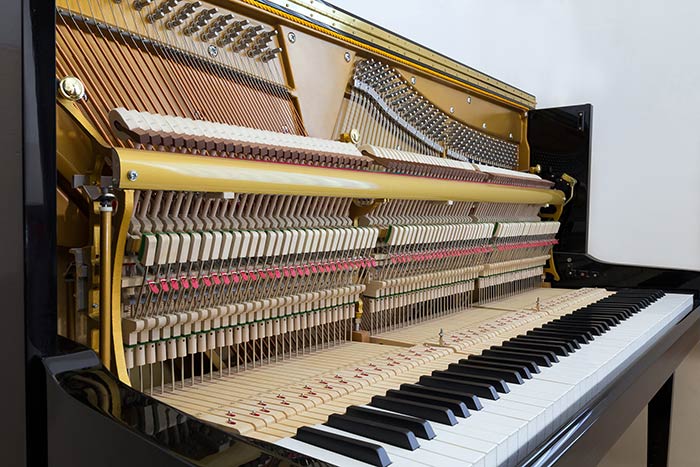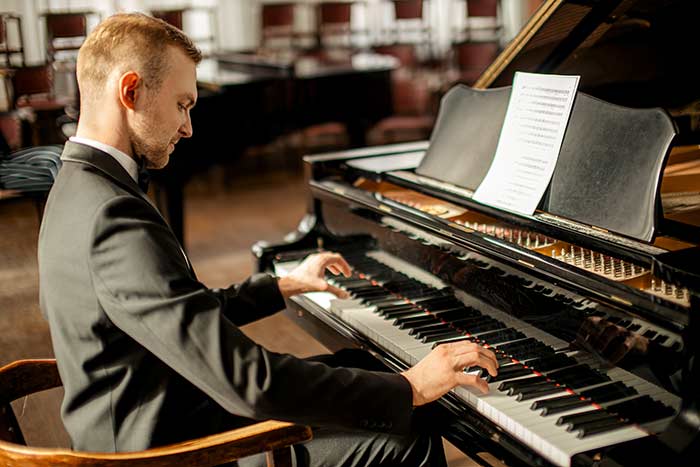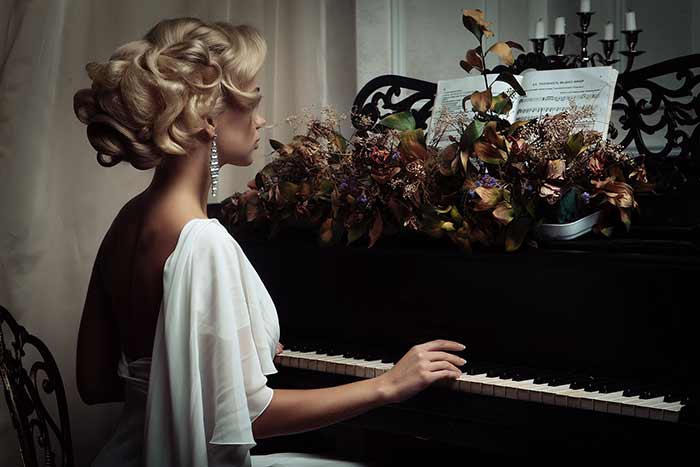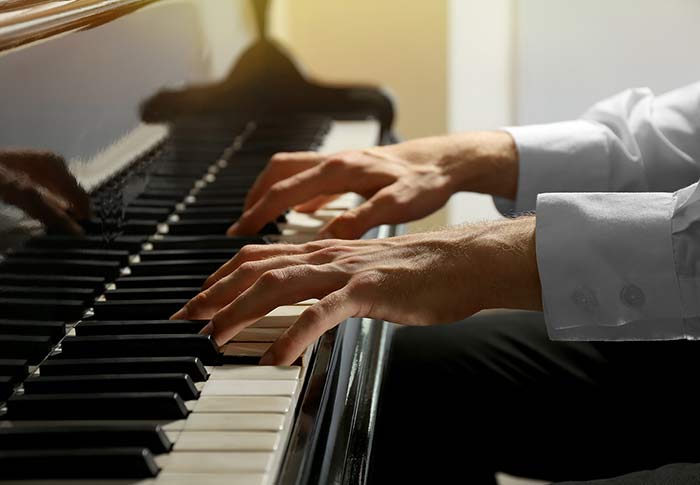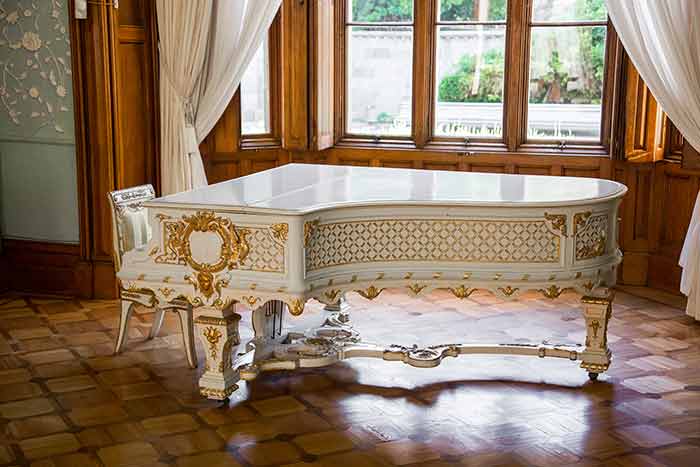You may notice that when you play the piano different pieces have certain characteristics. This will have something to do with the time period that it was written in. Music has five main eras, Renaissance, Baroque, Classical, Romantic and Modernist; today, we are going to travel in time and discover the beauty of each period.
The Renaissance period (1400-1600) was ruled by composers from the likes of William Byrd, Thomas Tallis and Claudio Monteverdi. Interestingly, Byrd and Tallis were the first composers to ever be granted a patent to print and publish music meanwhile Monteverdi was the first opera composer who’s works are still being performed today. But, how can we distinguish Renaissance music? Well, there is a plethora of text-music relationships. Within the Renaissance period, telling a story with words as well as music was a popular take. This is because there were a lot of operas and religious church music written at the time. As well, we can notice steady beats, polyphonic textures and balanced phrases written using modes.
Basically, everything during this time was carefully thought out with meaning, there was a logical reason and response to each and every note written on the score. During this time, all performances were on the harpsichord as the piano had not existed yet. The harpsichord was an interesting keyboard-like instrument and also one of the most important in European music. It had 60 keys and the strings were plucked which caused a vibration leading to sound. The tone of the harpsichord was caused by a soundboard which was placed beneath the strings and it would pass over a bridge that was glued to the soundboard where vibrations were transmitted.
Fast forward to 1600-1750 and in this time period you have arrived at the Baroque era. Ruled by composers such as Bach, Handel, Scarlatti and Purcell, it was a monumental moment within music history. The main features of Baroque music included ornamentation; trills, appoggiaturas, acciaccaturas, turns, mordents, you name it! Another was the Basso Continuo, this was a form of notation that seems out of the ordinary to us now. It had a fully written bass line, however, the chosen pianist would have had to improvise chords using figured bass over the top.
This was for the highly skilled performers and made performances extremely exciting. During this time, specifically the 1700s, because technology was rapidly increasing the Pianoforte was able to be invented by Bartolomeo Cristifori which replaced the harpsichord that was used in the Renaissance period. This meant that dynamics and larger pitch ranges were discovered and being experimented within scores and performances as this specific piano had more keys and had felt-covered hammers striking wire strings.
After the Baroque period, you then enter the Classical era, home of Mozart and Beethoven. During this time (1730-1820), music becomes a little more interesting as the pianos extremities were put to the test. Compared to the Baroque period, Classical period music was known more for its simplicity. Examples include tonal harmony and single-line melodies. Melodies showed signs of musical development with various modulations in tonality, tempo, and dynamics. With this, the melody was frequently composed to be in even, regular bar lengths.
Most common are melodies that form an eight bar phrase equally divided into two four bar sections. The additional reason this phrasing appeals is the harmony that underpins the melody. In the Classical period is the height of the tonal system with a clear polarity of tonic and dominant harmony. The power of the tonal system and the pull of the tonic dominant relationship gave structure to larger forms than just composition of melody during the Classical period. It allowed composers to develop a hugely innovative musical form called “sonata form”. This structure provided the building blocks for concertos, symphonies and sonatas.
From 1830-1900 was the Romantic Era where the main composers included Liszt and Chopin who made their compositions not only expressive but also incredibly virtuoso. Romantic composers prioritised the emotional and narrative content of the music rather than thinking about the form which is why they broke so many of the classical composers’ rules. However, contrary to belief, Romantic composers didn’t break the musical language developed during the Classical Period, but rather they used its forms as a foundation for their work. Beethoven was the originator of this approach, he lived and worked during the transition from the Classical to the Romantic Period, and was an inspiration to the Romantic composers. In addition to breaking existing rules, Romantic composers also developed new techniques or reinvigorated lesser used ones to express a more extensive array of emotional and narrative states.
They used more extended melodies, broader ranges of tone, pitch, and tempo – more sophisticated harmonies. The also took advantage of a variety of mechanical innovations, the broader range and improvement of instruments allowed Romantic composers to express more precise gradations of volume and tone. This included longer crescendos and diminuendos. It also allowed them to make greater jumps in tone and volume meaning not everything was entirely diatonic or consonant. The piano significantly evolved during the Romantic Period. For example, the number of physical keys expanded from five to eight octaves. The materials used to construct piano frames shifted from wood to metal, and the durability of the metal used to manufacture its strings improved. These improvements enriched the pitch range and tonal quality of the piano.
The last stop of our journey is twentieth century music where composers such as Shostakovich, Britten and Stravinsky demonstrated their talents. This period of music pushed the boundaries like no other as there were features of Impressionism, Atonalism/Serialism, Jazz influence, Minimalism, use of Electronic technology and Experimentalism, you were never short of a surprise when listening to this kind of music. The main focus was leaving behind the certainty of key, these composers enjoyed angular leaps and dissonant harmonies to take away the predictability of music that was always so comforting in the times before this. Of course, there was always still reasoning behind the writing, the unknown intrigued the audiences and is still enjoyable to this day.
What a whirlwind that was. There you have it, a journey through the musical ages. Why don’t you listen to some different examples from each time period and see if you can spot the characteristics mentioned above within each piece. This will also help you broaden your repertoire and truly understand which composer or which musical style you are most passionate about. But first, maybe put your feet up and have a tea, that was, after all, a lot of travelling!








